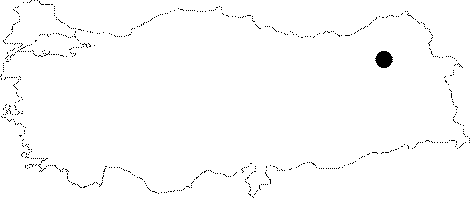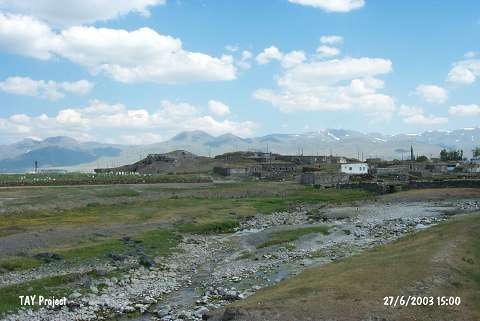|
©The Archaeological Settlements of Turkey - TAY Project
|
|
|
|
|
|
Pulur |
|
|
For site maps and drawings please click on the picture...  |
For photographs please click on the photo...  |
|
Type:
|
Mound |
|
Altitude:
|
1800 m |
|
Region:
|
Eastern Anatolia |
|
Province:
|
Erzurum |
|
District:
|
Ilica |
|
Village:
|
Ömertepe |
|
Investigation Method:
|
Excavation |
|
Period:
|
Late |
|
|
|
 |
|
| Location: It is located in the village of Pulur (Ömertepe); 7-8 km south-southeast of the Ilica District; 15 km west-southwest of Erzurum Province. |
| Geography and Environment: Adjacent to the mound; the Pulur Stream flows about 17 m high above the Erzurum Plain. It is surrounded by a fertile land. Although no information was provided about the dimensions of the mound; the drawing [Kosay-Vary 1964:pl.II-III] and the photographs indicate that it is not a big mound. The publications reveal that it has been severely damaged by the villagers as a result of removal of stone and earth. |
| History: |
| Research and Excavation: The site is excavated in 1960 by H.Z. Kosay and H. Vary on behalf of Erzurum Atatürk University. The excavations have been conducted at the westerns skirts; on the mound and at the eastern skirts. Virgin soil has been met. It takes place in the registered archaeological sites list prepared by Ministry of Culture and Tourism. |
| Stratigraphy: It has been settled in the end of Late Chalcolithic Age; EBA; Byzantine Period; Seljukian Period; and recently. The 6 m thick fill and 2-3 m thick stone assemblage recovered below the Byzantine Level has led to the thought that the mound could as well have been used as a tumulus. |
| Small Finds: Architecture: Level IV is assumed to be the beginning of Late Chalcolithic Age (?) and the the earlier levels recovered only by soundings do not yield any architecture. The absence of architecture for these layers results in unintelligable stratigraphy. The architectural remains of Level IV are solely a fireplace and a mud-brick wall segment. Ceramics: Two ware groups are recovered in levels below Level III. These are the relief decorated and grooved Karaz Ware represented by very few sherds and the hand-made; monochrome ware with Alacahöyük and Büyük Güllücek Chalcolithic Age pottery affinities. Karaz Ware sherds are studied in detail; whereas the rest are not well-published and the pottery assemblage of Level IV is not analysed statistically. Chipped Stone: The rich obsidian beds in Agiveren Village west of Pulur must have been used by the inhabitants of the site since the earliest settlement. |
| Remains: |
| Interpretation and Dating: The site was percieved as a Chalcolithic Age settlement and the beginning of this Karaz Ware dominant culture was dated to 2600 BC by the scholars within the limits of their knowledge in 1960. On the other hand; the Early Chalcolithic Age (?) finds from the site are dated to 3800 BC in the chronology table [Kosay-Vary 1964:53; table 1]. Therefore the existence of a Chalcolithic Age settlement in Pulur is ambigious. The site requires further research and excavation at least for chronological revision. |